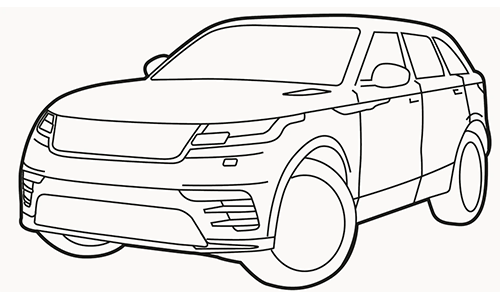Those costs are calculated for every American and totaled out to $1,035 per person, whether involved in an accident or not.
Seeing the costs involved, it’s no wonder that body shops are so busy these days. There were more than 23 million vehicles damaged during this study’s timeframe. The report also states that 36,500 people were killed and 4.5 million people injured, as well. All signs that there’s still a way to go for road safety.
Somewhat surprisingly, those not directly involved in crashes pay for about three-quarters of all crash costs through higher insurance premiums, taxes, and other hard-to-calculate factors such as travel delays, increased fuel consumption, and environmental impacts. These costs totaled over $261 billion.
Some say the current body shop business model is broken due to how much influence (or control) the insurance companies have over the entire process, from what a shop can charge for a headlight to replacement panels. While the growing number of fatalities is worrisome, technology can make cars safer and more dangerous at the same time.
Distracted driving is the biggest cause of accidents but not the most fatalities. Impaired driving (alcohol) is still the most deadly and with a higher chance of a fatality. Technology can also be to blame for the higher costs to repair with more driver assistance features (ADAS), and overall increased use of computer modules (chips) in vehicles. This means that a mild fender bender can cost several times more because shops must replace multiple sensors (parking, lane assist, etc.), and other safety-related systems.
About 22.9 million vehicles were damaged in motor vehicle crashes in 2019; some 19.3 million or 84 percent of these vehicles were damaged in incidents that incurred property damage only.
This report indicates that the total cost from traffic crashes in 2019 of $340 billion is approximately 40 percent higher than its previous estimate of $242 billion in 2010. The difference in these estimates is attributable to a number of factors, including inflation, which accounts for an overall rise in the cost of goods and services of approximately 17 percent, shifts in the severity of crashes and the nature of injury outcomes, and a revised basis for measuring unit costs.
The report also examined crash costs for various roadway types and crash configurations. Among its findings, crashes on interstate highways were responsible for roughly 12 percent of economic costs and societal harm, while the more frequent but less serious crashes at intersections account for 53 percent of economic costs and 49 percent of societal harm. It’s just a fact of life in our society that fender benders occur so often, but it is clear that the costs are rising to repair vehicles, and the potential for fatalities is still a big factor in the equation.
With OEMs introducing more and more safety systems such as ADAS and other crash avoidance systems, the methods and tools to repair these vehicles are significantly more complex than even a decade ago, yet we are still trying to get people to wear seatbelts on a regular basis in 2023.



























































